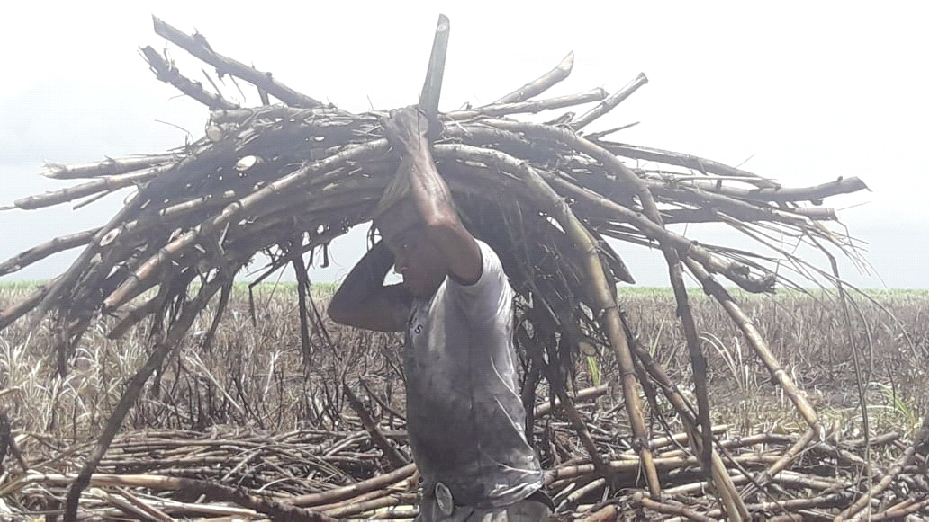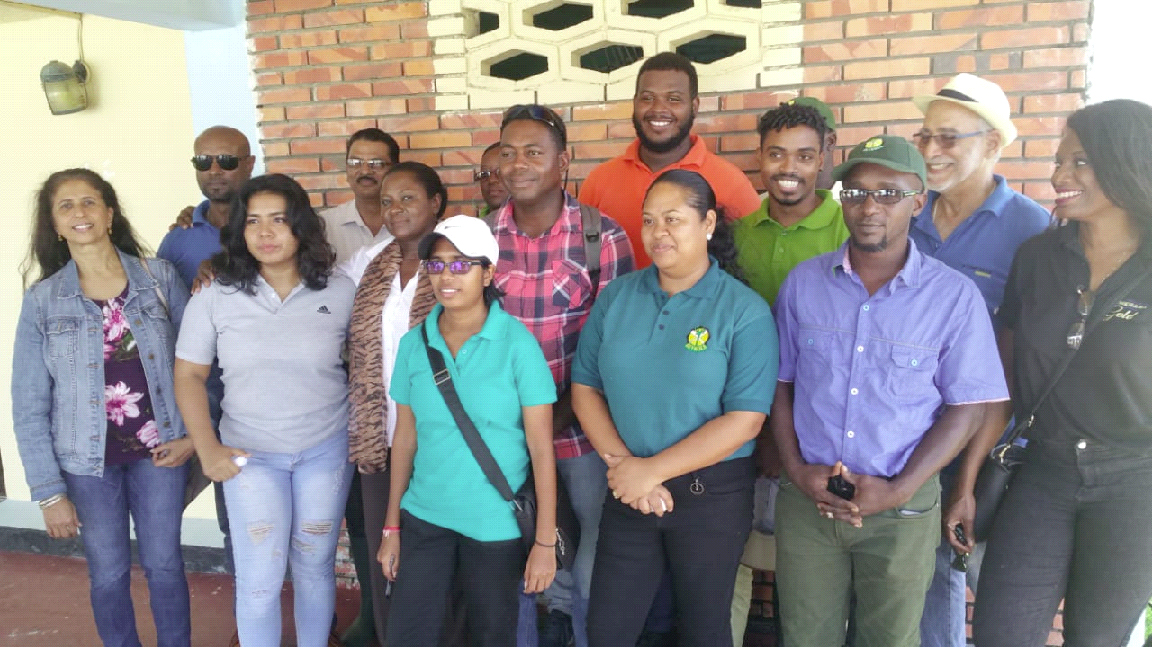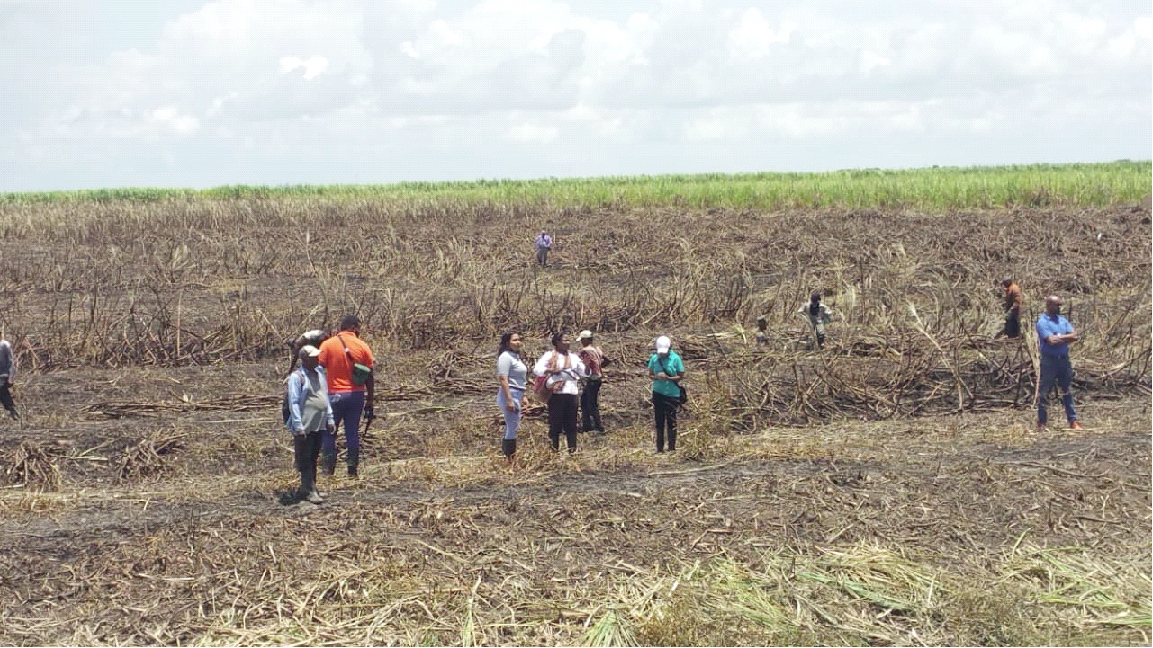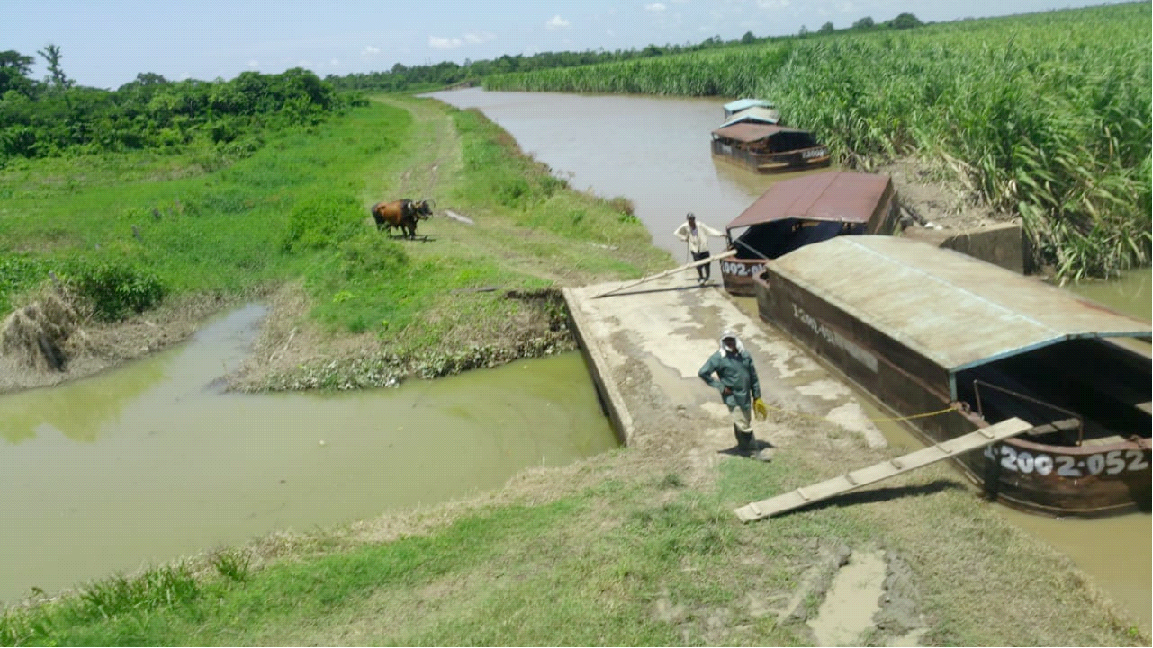With the aim of generating additional revenue for the downsized sugar industry, the Guyana Sugar Corporation (GuySuCo) has moved to turn some of its estates into a “cultural heritage tourism product” where persons would gain a first-hand experience of estate operations.
“Cultural heritage tourism in the GuySuCo context will refer to the experience of places, artifacts and activities that authentically represent the stories and people from the sugar industry in Guyana both past and present. It will include irreplaceable historic, cultural and natural resources in the sugar industry, both past and current,” Public Relations Officer of GuySuCo Audreyanna Thomas told a tour on Thursday.
Reporters and local tour operators were taken to visit the Uitvlugt Estate on the West Coast Demerara, named after Dutch planter Ignatius Charles Bourda Uitvlugt, and Thomas said that the visits by tourists will have the same itinerary.
Starting operations since 1871, the Uitvlugt Estate was in 1921 acquired by the Demerara Company and subsequently by Jessels. According to GuySuCo information, after 60 years of factory operations, in January 1981, Uitvlugt was merged with Leonora and now covers some 6,005.9 hectares.
Tourists can expect a locally prepared breakfast when they arrive in the mornings and will then be taken on a tour of the factory and cultivation. They will stop at the cane gantry where they will see trailers and punts being lifted, then be taken to the primary and secondary nurseries of the estate and be given a detailed explanation of what happens there.
The tour will then continue by truck where persons will get to see first-hand how cane is planted and harvested. The tourists will have the opportunity to interact with the field workers before returning to the main compound.
Some of the workers at the Uitvlugt Estate were originally based at the now shuttered Wales Estate but they explained that the work is basically the same. While the estate workers were candid about their experiences, they asked that their names not be mentioned.
“Estate work a hard work. It start from early a morning because you want finish early and nah want deh in the hot, hot sun,” one of the cane harvesters, who had already harvested his daily quota of cane, said, when asked about his experience.
Now 37 years, the man, who is a resident of Wales, said that he started working for GuySuCo some 17 years ago. He recalled that it was his uncle who helped him to get a job with the company and he took it “because me nah frighten hard work.”
The man said that a typical day for him begins at about 3 am, when he leaves home with co-workers for the journey to Uitvlugt. At an assembly point, they then enter trucks to head to whichever field is being harvested. He attires himself in “light” clothing and on his feet, wears “yachting boots” provided by GuySuCo. He explained that the Converse-like shoes are preferred because they are lightweight and make for easy moving through the dirt fields.
Harvesting of the sugarcanes is done manually so workers are provided with a cutlass and assigned specific areas to harvest.
Tour guide Andrew McCloud explained that after the cane is cut and bundled, it is weighed and placed in punts for transport back to the factory for grinding and processing.
$38 per mouse
In addition to their payment for the cane that is cut, some workers supplement their income by catching field mice daily. “The man with the bag and the other with the white bucket is what we call rat catchers,” an estate worker said. The “rat catchers” are paid $38 per mouse.
He posited that field mice are more intelligent than those found in homes. He explained why he felt this way. “They adapt to this field. They would eat a field in a weekend and that is why they don’t have holiday with this work. You work every single day. Them things bad for days. They nah eat the canes facing the dam you know, because they know that we is check from here [pass by in a vehicle on the dam]. But buss through about the tenth row and you will find that area shine, shine, shine. We is set poison but they don’t get time with that. They want cane,” he said.
It is for this reason that persons seek to hunt the mice and armed with traps and wood, they are sometimes successful. “One time, a man catch about 1,700 one day. That is how these things serious,” the employee said.
Another interjected saying that field foremen have to be careful also because the employees would lend their caught mice to friends in another field so they can get double payment.
But the mice have not significantly impacted any of the estates’ harvests and the corporation is “on target” to meet its annual projections, with Uitvlugt expected to produce 13,000 tonnes of sugar for the second crop.
In a statement, GuySuCo said that it has a responsibility “to preserve and develop innovative ways of transferring knowledge on sugar and its history and to effectively tell the story of sugar in Guyana; this is being done by creating more value from the sugar heritage through its ‘Cultural and Heritage (Sugar) Tourism programme as a new business component of its operations.”
The initiative is being developed within parameters outlined under the United Nations Educational, Scientific and Cultural Organization’s (UNESCO’s), World Heritage and Sustainable Tourism Programme as well as national guidelines.
GuySuCo noted that its cultural heritage tourism refers to the experience of places, artifacts and activities that authentically represent the stories and people from the sugar industry in Guyana both past and present. Its vision is to create more value from the cultural heritage of sugar in Guyana through the development and delivery of a competitive tourism product which provides economic, social, cultural, and educational benefits, and relaxation.
Locations identified for the programme are the Albion, Uitvlugt and Blairmont estates and the La Bonne Intention Head Office compound.
“Some of the attractions at the Albion Estate in Berbice will include: Albion Sugar Factory, old mills reduction gears; animal-drawn (oxen-drawn) punts, old sugar mill at the GuySuCo Training Centre/Port Mourant (GTC/PM) Hostel, ancient drainage pumps at Albion, Chesney, Nigg and Ankerville; the Butcher Canal which was first dug manually by slaves; outstations or ‘pumping stations’ at Brotherson, Vriendschapp, the Torani Canal and a 1924 Rolls Royce in working condition.
“Attractions at the Uitvlugt Estate will include: A manual crane which was used in [the] 1700s to ship sugar and return goods to the Estate Stores; animal-drawn (oxen-drawn) punts; Sea-face sluices which were installed since the 1800s; a factory structure that was built in the early 1900s, cultivations, the Boeraserie Conservancy, among others. Blairmont Estate also has unique attractions such as the integration of sugar cane cultivations with cattle ranching, a railway that transports sugar from the factory to the wharf and the structure that was used to transport cane via punts across the Berbice River, from Providence on the East Bank of Berbice, to the Blairmont factory on the West Bank of Berbice,” the statement said.
Thomas said that conservancy tours can also be organised for interested persons and groups.
Plans for the future include a museum. GuySuCo said that it is currently exploring opportunities for funding and other support from international organisations and universities, in areas of anthropology, archaeology, history, cultural and heritage tourism, etc, to conduct an inventory of tangible and intangible assets relative to the culture and heritage of the sugar industry. It seeks to design and construct a ‘Sugar Museum’ and a ‘Sugar Heritage Park’ at one of its former locations, possibly, at the old factory at the former Leonora Estate.








